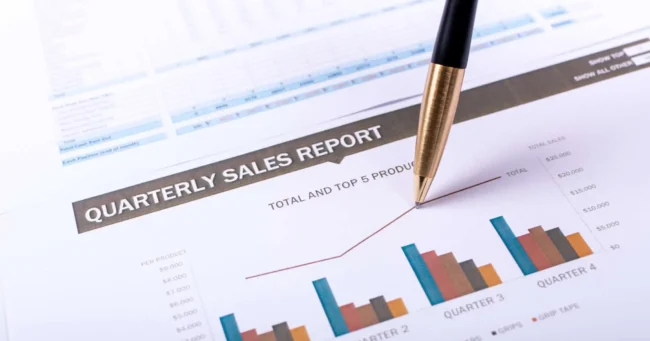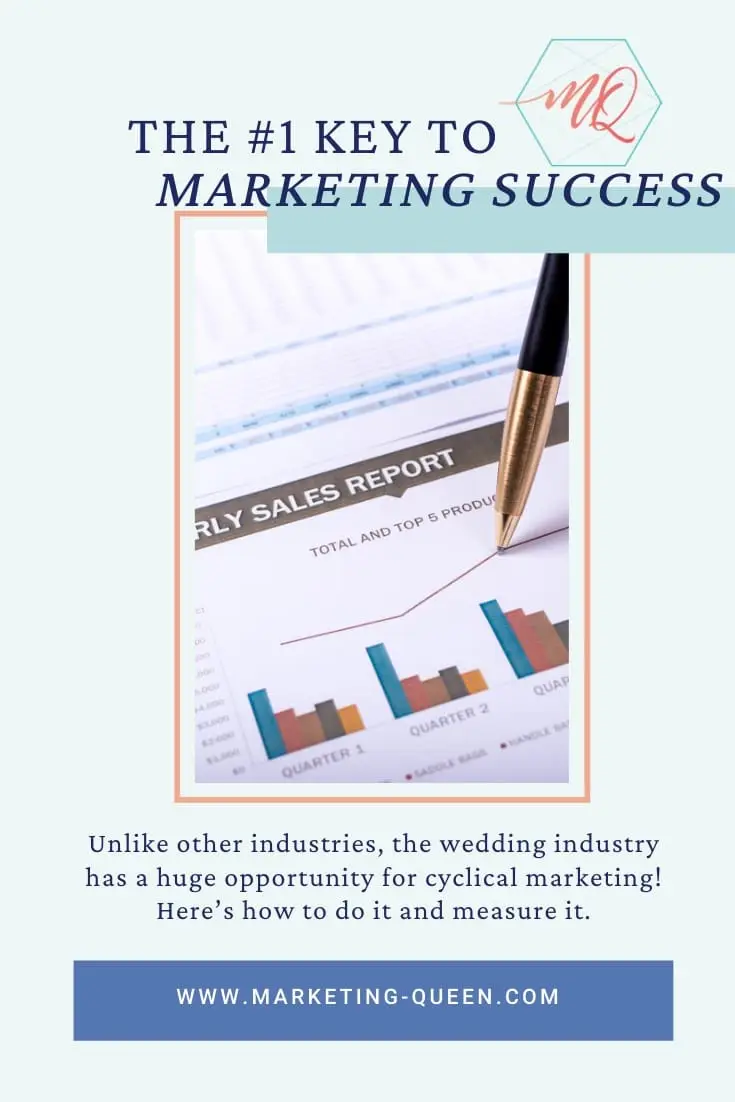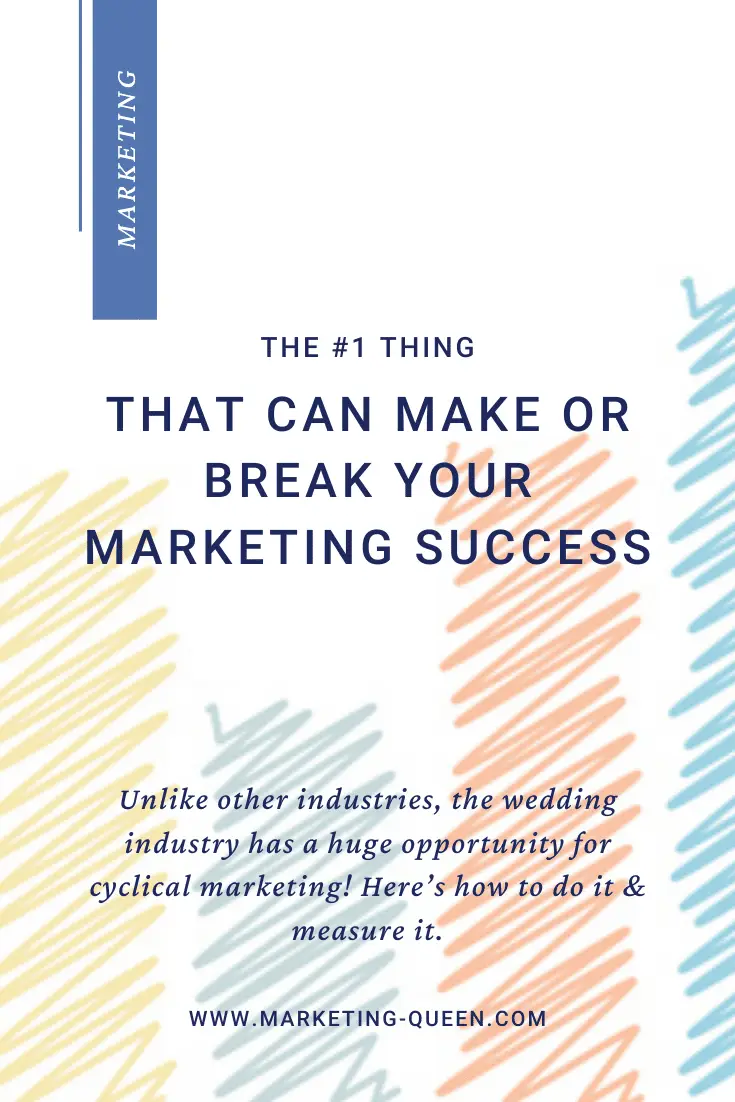At least once a week I’m struck by how lucky I am to be a marketer in the most gracious and loving industry…the wedding industry! Everyone is so warm and caring: photographers, event planners, florists, cake designers, caterers, and everyone else who helps pull off these magical occasions.
The warm, family-like atmosphere is my favorite part of working in the wedding industry. But there’s another benefit that’s a close runner-up for me: the opportunity for cyclical marketing.
Not familiar with the term “cyclical marketing”? Keep reading. I guarantee you’ll have an “aha” moment, and see how to take advantage of it all.
What is cyclical marketing?

Let’s take a step back and talk about the “cyclical” part of cyclical marketing. Cycles are all around us. Each day is a cycle of 24 hours; each year is a cycle of 365 days. The four seasons are also cyclical.
The wedding industry is cyclical, too. Its cycles follow fairly closely the four quarters of the year, which is great from a business standpoint.
“Wedding season” takes place from April to October – but that only describes when the weddings are actually taking place. The truth is, we’re busy all year!
Of course, no business owner can ever take a break from marketing and sales. There’s a certain level of foundational marketing and sales you must maintain all year.
But, the ebbs and flows of the industry are really beneficial to marketing! Let’s take a look.
How to Reap the Benefits of Wedding Industry Cycles
Here’s how it breaks out by quarter.
First Quarter (January, February March)
This is when couples are shopping. Their priority is finding a date and booking an available venue. Also, there are many, many bridal expos during the first quarter of the year. So what does this mean for you?
Your Google Analytics metrics will look ahh-maz-ing: lots of website traffic, lots of inquiries, and (fingers crossed) high conversion rates and bookings.
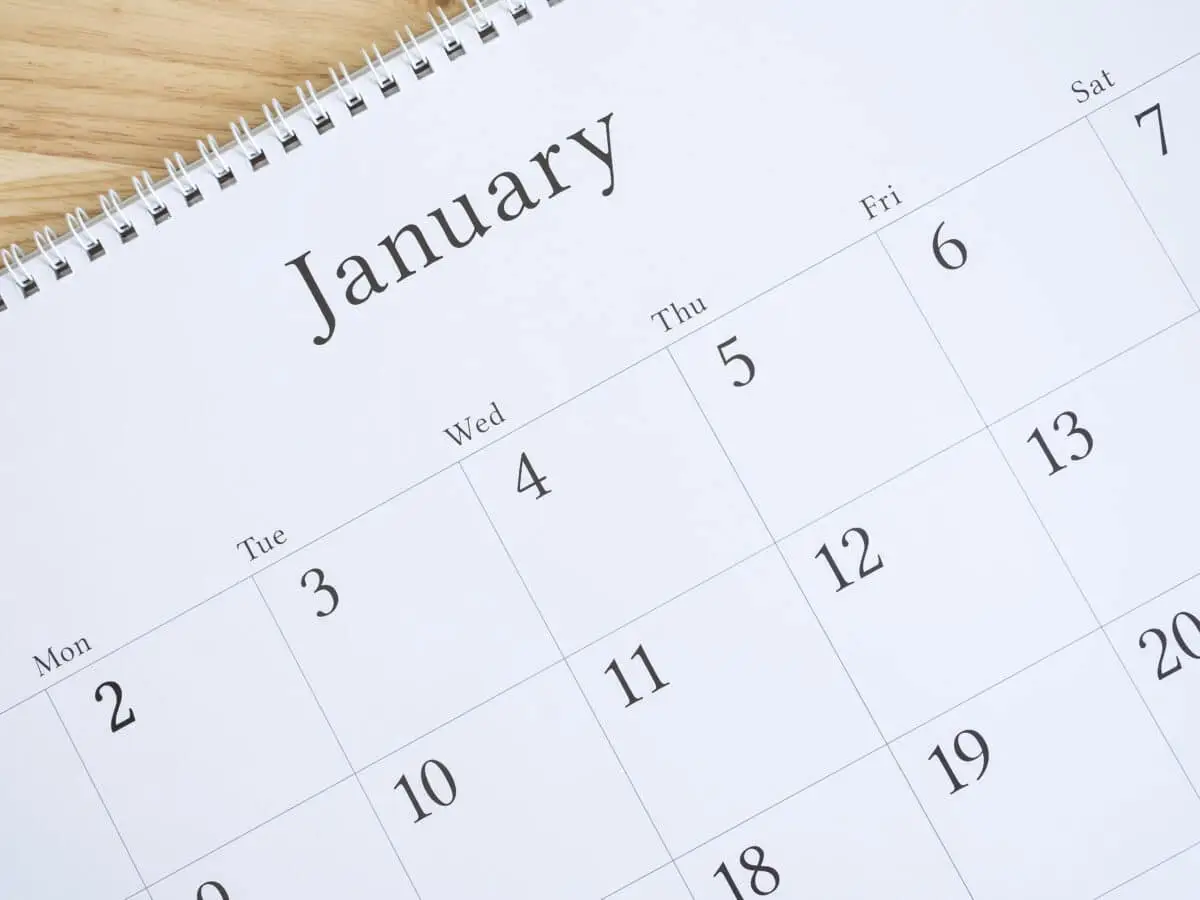
Second Quarter (April, May, June)
Couples are still shopping in the second quarter. Once they’ve found their venue, they’re looking for everything else: a florist, a photographer, a caterer, etc. These types of vendors will still see an increased number of inquiries and sales.
By the end of second quarter, you’re busy executing the work in our contracts you’ve finalized. This is also when the influx of new contracts begins to ebb.
Third Quarter (July, August, September)
Summer is the time for work, work, and more work. (Summer vacation? What’s that?)
Because you’re so busy, your marketing activities will probably taper off. You can only do so much! Fewer contracts tend to come in.
However, there’s usually an uptick in sales starting in September, because there’s an uptick in engagements.
So what does this mean for your marketing? August and September are a great time for reflection and reignition. You want to look at:
- What clientele booked you last year?
- How do those clientele compare to your ideal clientele?
- Using that information, what tweaks do you need to make to your foundational marketing pieces?
- Do you need to make changes to your service descriptions (and prices)?
Third quarter is also the perfect time to determine if your website needs an overhaul or refresh. Why? Because you want your new website ready for that sales-intense first quarter of the new year, when everyone’s shopping again. Book your designer ASAP if you want to be live by the end of fourth quarter.
Fourth Quarter (October, November, December)
Let the heavy marketing begin! Now’s the time to take what you learned last quarter about your marketing and apply it. There are fewer wedding events taking place during fourth quarter, so no excuses.
Take your foundational marketing activities and kick them up several notches. This is when the engagements are happening. According to The Knot 2015 Real Weddings study, about 38 percent of all engagements happen between November and Valentine’s Day.
AKA, this is when brides hit the ground running in their search for wedding vendors.
And this flows right into the first quarter of the new year, when you have the highest opportunity to make the most sales.
Putting It All Together: When to Market Your Wedding Business
Looking at the different quarters, it’s easy to identify the best opportunities to market your wedding business!
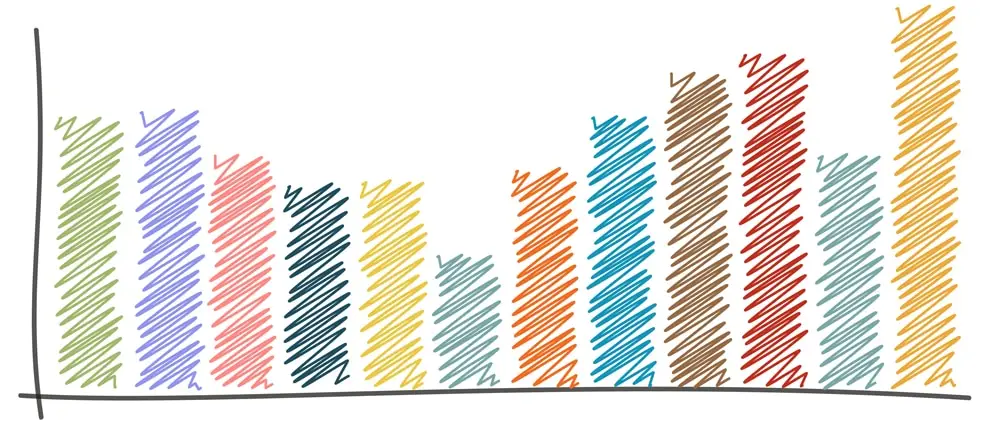
- Because weddings and events occupy many (if not every) weekend in Q2 and Q3, that’s the busy season. You can rely on your foundational marketing activities because your audience isn’t looking for you too hard right now.
- In Q4 and Q1, you’re less busy with actual work, so it’s Marketing Season! And that perfectly aligns to the time period when your audience will be actively searching for you. Your website should be in tip-top shape during this period of client attraction. You’ll want to engage in additional marketing efforts during this time: e.g., collaborative shows and events, special email campaigns, strong conversion funnels, and possibly some promotions.
As your efforts and priorities change based on the quarter, your Google Analytics metrics shift accordingly. It’s so important for those of us in the wedding industry to understand this because it has a direct impact on how we tweak our marketing efforts going forward.
Understanding How the Cycles of the Wedding Industry Affect Your Google Analytics Metrics
Having read all that, it may not surprise you to learn:
- During Marketing Season (Q4 and Q1), traffic to your website will be higher.
- During busy season (Q2 and Q3), traffic to your website will be lower.
But this is where it gets interesting for those of us in the wedding industry. If you compare metrics from quarter to quarter, you’ll get the wrong picture of how successful your marketing efforts are.
Let’s keep using the example of website traffic. You simply can’t compare website traffic in Q1 to Q2. The cyclical nature of the wedding industry means that no matter what you do, your website will receive less traffic.
Instead, you need to compare Q1 stats to Q1 stats from previous years. That way, you’ll be comparing apples to apples – and able to gain valuable insights about what works best in Marketing Season.
If you’re interested in learning more about how to measure marketing success for the wedding industry, read my post The Four Major Rules of Marketing.

